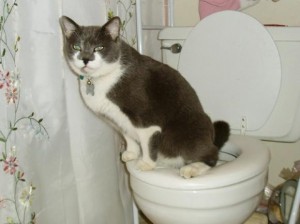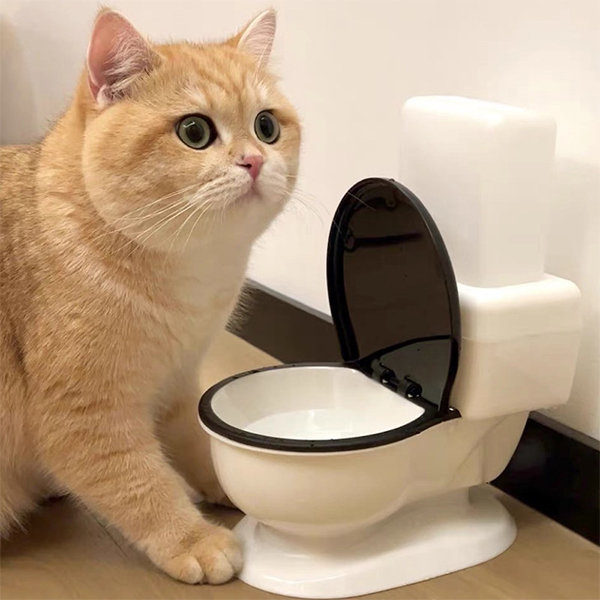Don't Flush Cat Poop Down Your Toilet - Maintain Your Home's Pipe System
Don't Flush Cat Poop Down Your Toilet - Maintain Your Home's Pipe System
Blog Article
Just about every person seems to have their own assumption involving Can You Flush Cat Poop Down The Toilet?.

Intro
As pet cat owners, it's necessary to bear in mind just how we dispose of our feline buddies' waste. While it may seem practical to purge pet cat poop down the commode, this technique can have detrimental consequences for both the environment and human health and wellness.
Environmental Impact
Purging feline poop presents unsafe pathogens and parasites right into the water, posing a significant risk to aquatic communities. These contaminants can negatively impact marine life and compromise water quality.
Health Risks
Along with environmental issues, flushing cat waste can also pose health risks to human beings. Pet cat feces might include Toxoplasma gondii, a bloodsucker that can create toxoplasmosis-- a possibly serious health problem, specifically for pregnant females and people with damaged body immune systems.
Alternatives to Flushing
Luckily, there are much safer and a lot more accountable ways to take care of feline poop. Think about the following choices:
1. Scoop and Dispose in Trash
One of the most common method of taking care of feline poop is to scoop it into a biodegradable bag and throw it in the trash. Be sure to utilize a dedicated trash scoop and get rid of the waste promptly.
2. Use Biodegradable Litter
Go with eco-friendly pet cat litter made from products such as corn or wheat. These clutters are eco-friendly and can be safely thrown away in the trash.
3. Hide in the Yard
If you have a lawn, take into consideration hiding feline waste in a designated location away from veggie yards and water resources. Be sure to dig deep enough to avoid contamination of groundwater.
4. Mount a Pet Waste Disposal System
Purchase a family pet garbage disposal system especially developed for pet cat waste. These systems use enzymes to break down the waste, minimizing smell and environmental effect.
Conclusion
Accountable pet dog possession extends beyond supplying food and shelter-- it additionally includes proper waste administration. By avoiding flushing feline poop down the commode and selecting alternate disposal approaches, we can reduce our ecological footprint and protect human health and wellness.
Why Can’t I Flush Cat Poop?
It Spreads a Parasite
Cats are frequently infected with a parasite called toxoplasma gondii. The parasite causes an infection called toxoplasmosis. It is usually harmless to cats. The parasite only uses cat poop as a host for its eggs. Otherwise, the cat’s immune system usually keeps the infection at low enough levels to maintain its own health. But it does not stop the develop of eggs. These eggs are tiny and surprisingly tough. They may survive for a year before they begin to grow. But that’s the problem.
Our wastewater system is not designed to deal with toxoplasmosis eggs. Instead, most eggs will flush from your toilet into sewers and wastewater management plants. After the sewage is treated for many other harmful things in it, it is typically released into local rivers, lakes, or oceans. Here, the toxoplasmosis eggs can find new hosts, including starfish, crabs, otters, and many other wildlife. For many, this is a significant risk to their health. Toxoplasmosis can also end up infecting water sources that are important for agriculture, which means our deer, pigs, and sheep can get infected too.
Is There Risk to Humans?
There can be a risk to human life from flushing cat poop down the toilet. If you do so, the parasites from your cat’s poop can end up in shellfish, game animals, or livestock. If this meat is then served raw or undercooked, the people who eat it can get sick.
In fact, according to the CDC, 40 million people in the United States are infected with toxoplasma gondii. They get it from exposure to infected seafood, or from some kind of cat poop contamination, like drinking from a stream that is contaminated or touching anything that has come into contact with cat poop. That includes just cleaning a cat litter box.
Most people who get infected with these parasites will not develop any symptoms. However, for pregnant women or for those with compromised immune systems, the parasite can cause severe health problems.
How to Handle Cat Poop
The best way to handle cat poop is actually to clean the box more often. The eggs that the parasite sheds will not become active until one to five days after the cat poops. That means that if you clean daily, you’re much less likely to come into direct contact with infectious eggs.
That said, always dispose of cat poop in the garbage and not down the toilet. Wash your hands before and after you clean the litter box, and bring the bag of poop right outside to your garbage bins.
https://trenchlesssolutionsusa.com/why-cant-i-flush-cat-poop/

I'm certainly very focused on How to Dispose of Cat Poop and Litter Without Plastic Bags and I hope you enjoyed reading the blog entry. Appreciated our content? Please share it. Let someone else locate it. I recognize the value of reading our article about Can You Flush Cat Poo or Litter Down the Toilet?.
Call Report this page